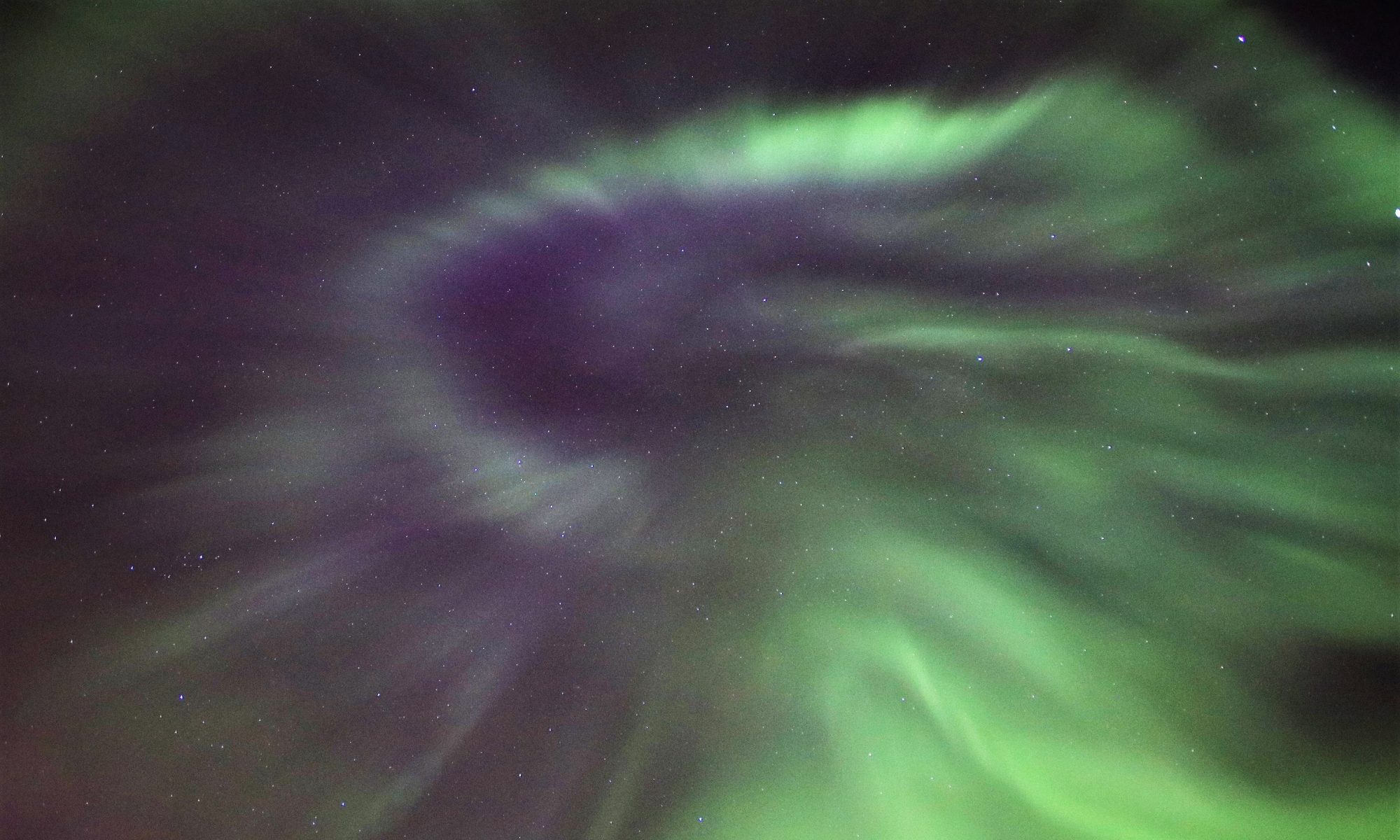
Electric currents originating in such fashion apparently give auroral electrons their energy. The magnetospheric plasma has an abundance of electrons: some are magnetically trapped, some reside in the magnetotail, and some exists in the upwards extension of the ionosphere, which may extend (with diminishing density) some 25,000 km around the Earth.
The convergence of magnetic field lines near Earth creates a “mirror effect” which turns back most of the down-flowing electrons (where currents flow upwards), inhibiting current-carrying capacity.
Some O+ ions (“conics”) also seem accelerated in different ways by plasma processes associated with the aurora.
In addition, the aurora and associated currents produce a strong radio emission around 150 kHz known as auroral kilometric radiation (AKR, discovered in 1972).
These “parallel voltages” accelerate electrons to auroral energies and seem to be a major source of aurora.
Other processes are also involved in the aurora, and much remains to be learned. Auroral electrons created by large geomagnetic storms often seem to have energies below 1 keV, and are stopped higher up, near 200 km. Such low energies excite mainly the red line of oxygen, so that often such auroras are red. On the other hand, positive ions also reach the ionosphere at such time, with energies of 20-30 keV.
The Solar wind
The solar wind is a stream of charged particles which are ejected from the upper atmosphere of the sun. It consists mostly of high-energy electrons and protons that are able to escape the sun’s gravity in part because of the high temperature of the corona and the high kinetic energy particles gain through a process that is not well understood at this time.
The aurora is a glow observed in the night sky, usually in the polar zone. In northern latitudes, it is known as “aurora borealis”. The aurora borealis is also called the “northern lights”. The aurora borealis most often occurs from September to October and March to April.
The aurora is now known to be caused by electrons of typical energy of 1-15 keV, i.e. the energy obtained by the electrons passing through a voltage difference of 1,000-15,000 volts. The light is produced when they collide with atoms of the upper atmosphere, typically at altitudes of 80-150 km. It tends to be dominated by emissions of atomic oxygen–the greenish line at 557.7 nm and (especially with electrons of lower energy and higher altitude) the dark-red line at 630.0 nm.
The two most commonly referenced data points in some graphs are the Solar Wind (yellow line) and Bz component (red line). During times of relaxed solar activity, the solar wind usually streams past Earth at a speed of 250 km/s to 400 km/s. When a solar flare takes place, it can sometimes eject material into space and towards Earth also known as a Coronal Mass Ejection. The solar wind speeds carried past Earth by these shockwaves can sometimes exceed 700-800 km/s or even higher. The greater the increase, the stronger an impact to Earths geomagnetic field can be.
The Bz component represented by the red line is the current condition of the Sun’s magnetic field, also known as the interplanetary magnetic field (IMF).
